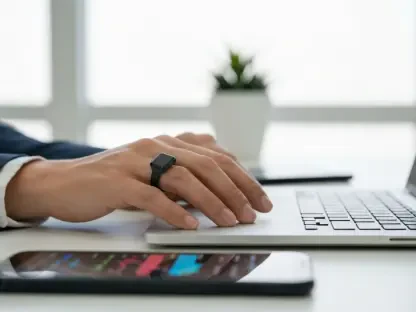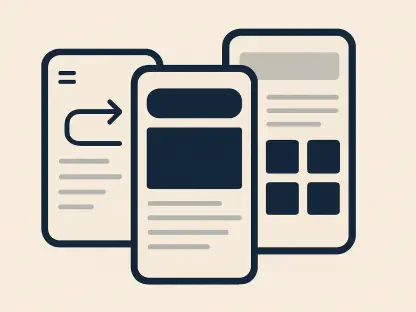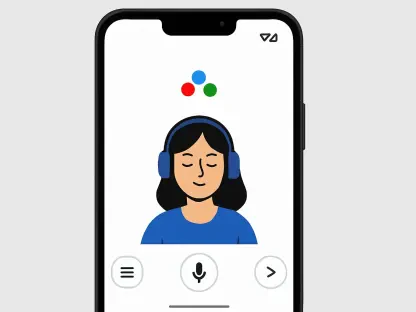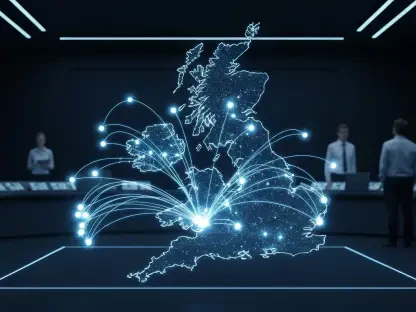Imagine a bustling university campus where students rush between classes, work, and downtown errands, relying on a free bus service to navigate their packed schedules, only to find that a new digital ticketing system has thrown a wrench into their daily routines. At Indiana University of Pennsylvania (IUP), a partnership with the Indiana County Transit Authority (IndiGo) has long provided complimentary transportation for students, easing the burden of getting around. However, the recent transition to the IndiGo Mobile Pay app, which replaces the traditional I-Card with a phone-based QR code for boarding, has sparked a wave of discussion. Designed to streamline the process by storing passes directly on students’ devices, this shift reflects a broader push toward modernization. Yet, as the campus adapts to this change, questions arise about whether the app truly serves the diverse needs of the student body or if it introduces more barriers than benefits.
Evaluating the Digital Transition
Modernizing Campus Transit: Goals and Features
The move to a digital ticketing system at IUP through the IndiGo Mobile Pay app marks a significant step toward updating campus transportation. This initiative, driven by IndiGo and university administrators, aims to enhance efficiency by allowing students to register with their IUP email and access a QR code for bus entry, eliminating the need for physical cards. According to IndiGo’s leadership, the app promises convenience, as passes are stored directly on smartphones, simplifying boarding for routes that connect key campus areas, frequent stops, and a park-and-ride service. With the main hub at Robertshaw West Lot, roughly a mile from the central campus, the system is designed to support students traveling to classes or downtown. The underlying goal is to encourage greater use of the free bus service by making it more accessible and aligned with modern tech trends, reflecting a broader movement in public transit to prioritize digital solutions over outdated methods.
Student Reception: Convenience or Complication?
While the intent behind the IndiGo Mobile Pay app is to modernize and simplify, student feedback reveals a more complex reality. Many express frustration with the shift from the familiar I-Card system to a phone-dependent solution, citing practical challenges that hinder usability. For instance, concerns about phone battery life loom large—if a device dies during a busy day, students risk being stranded without access to their digital pass. Additionally, the app’s reliance on technology assumes a level of digital access and comfort that not all students possess, creating potential inequities. Beyond technical issues, logistical mismatches, such as bus schedules that fail to align with early commitments like clinical rotations, further dampen enthusiasm. This mixed reception highlights a disconnect between the administrative vision of streamlined transit and the day-to-day realities faced by students navigating a demanding academic environment.
Addressing Broader Campus Challenges
Parking Woes and Accessibility Barriers
Beyond the digital ticketing system, deeper structural issues with campus transportation at IUP contribute to student dissatisfaction. Parking, in particular, remains a sore point for many, with limited convenient spaces driving frustration among commuters and residents alike. Despite the university offering six distinct lots with various permit types, the distance of locations like Robertshaw West Lot from core campus areas often makes walking seem just as viable as waiting for a bus. For some, the cost of parking fees outweighs the benefits of using the free transit service, leading to a preference for off-campus housing or personal arrangements over reliance on university-provided options. These accessibility barriers suggest that while the app aims to boost bus usage, underlying challenges like parking scarcity and inconvenient stop locations must be addressed to truly meet student needs.
Bridging the Gap: Student Needs vs. Innovation
The tension between innovation and practicality is evident as IUP students grapple with the IndiGo Mobile Pay app alongside pre-existing transit hurdles. Scheduling remains a critical pain point, with bus hours often failing to accommodate the diverse timetables of a student body balancing academics, work, and extracurriculars. The push for digital solutions, while forward-thinking, sometimes overlooks the value of simplicity and reliability that students prioritize in their daily routines. Many find workarounds—whether walking or paying for parking—more dependable than adapting to a system that feels out of sync with their realities. Support resources, such as the Parking and Transportation Services office in Clark Hall, offer assistance, but a broader dialogue between administrators and students appears necessary to align technological advancements with genuine accessibility and convenience.
Reflecting on a Path Forward
Lessons from the Digital Shift
Looking back, the rollout of the IndiGo Mobile Pay app at IUP stood as a bold attempt to modernize campus transit, yet it stumbled in addressing the practicalities of student life. The initiative revealed a clear divide between the optimism of administrators, who championed digital efficiency, and the skepticism of students, who encountered technical glitches and logistical mismatches. Concerns over phone dependency and inconvenient schedules underscored a broader challenge of ensuring equity in access to transportation. Moreover, the persistent issues of distant parking and limited bus availability compounded hesitations, showing that technology alone couldn’t resolve deeper systemic flaws. This experience highlighted the importance of grounding innovation in user feedback to avoid alienating the very community it aimed to serve.
Steps Toward a More Inclusive System
As reflections on this transition unfolded, it became evident that actionable improvements were needed to reconcile student needs with technological progress. Prioritizing schedule adjustments to cover early and late hours could better support diverse routines, while contingency plans for digital access—perhaps temporary paper passes—might mitigate tech-related barriers. Engaging students directly through surveys or forums offers a way to capture real-time feedback, ensuring future updates to the transit system reflect actual usage patterns. Additionally, addressing parking proximity and capacity remains critical to making the bus service a viable alternative. By focusing on these steps, IUP and IndiGo have the opportunity to transform a well-intentioned but flawed initiative into a model of accessible, user-centered campus transportation.









